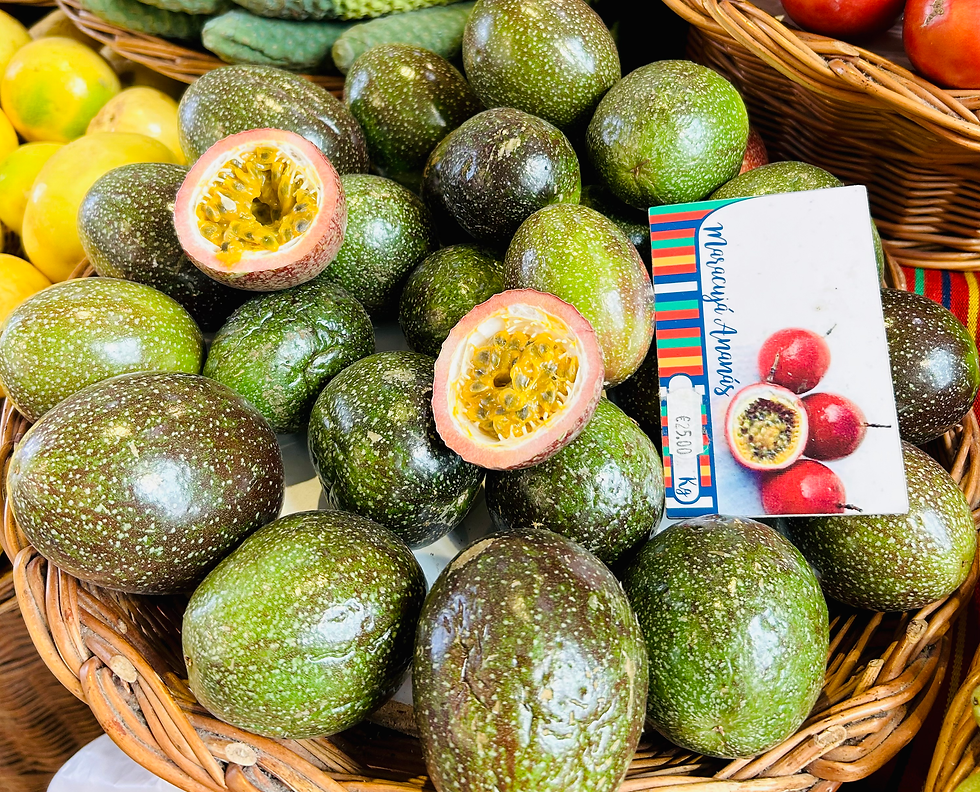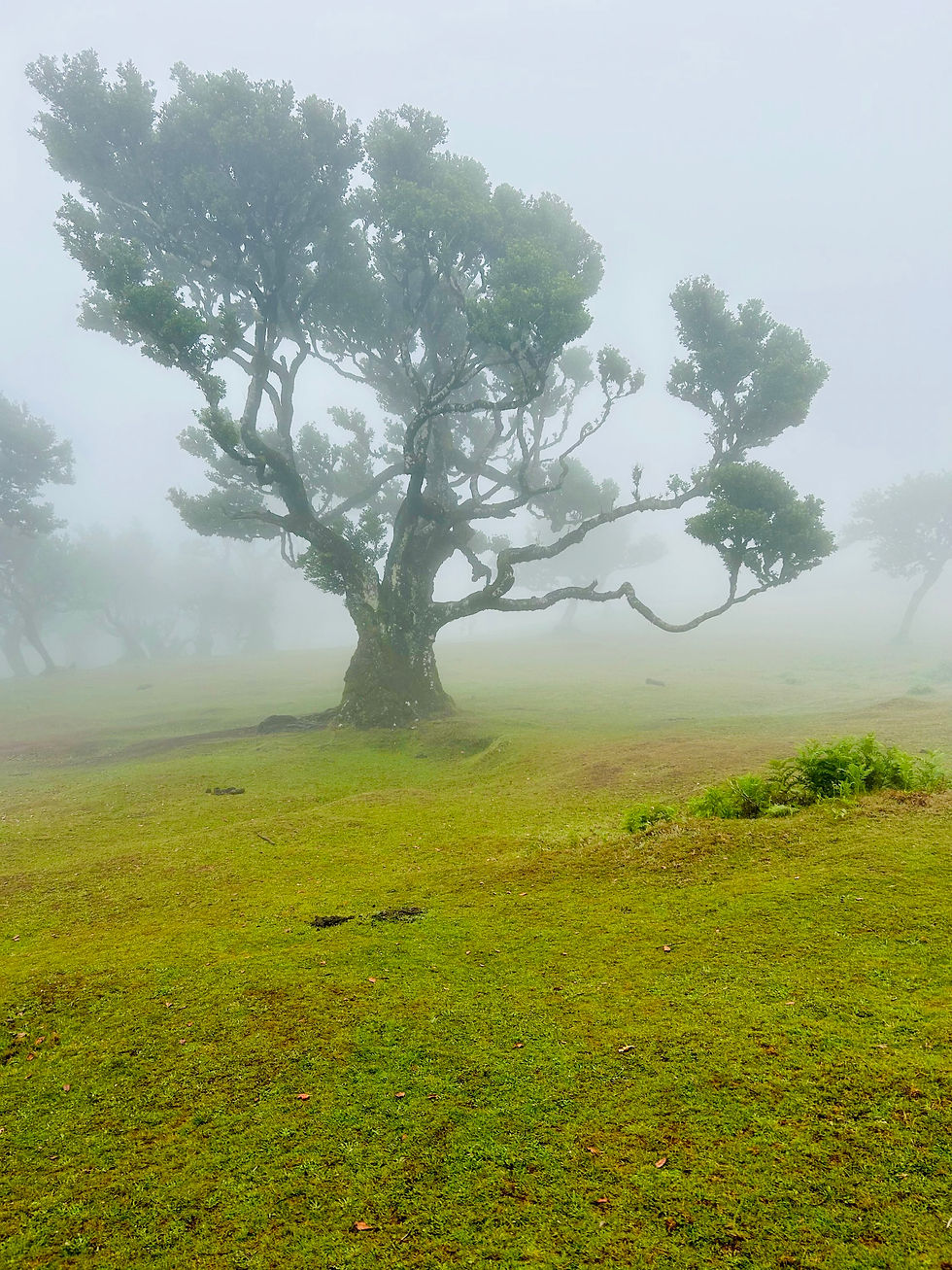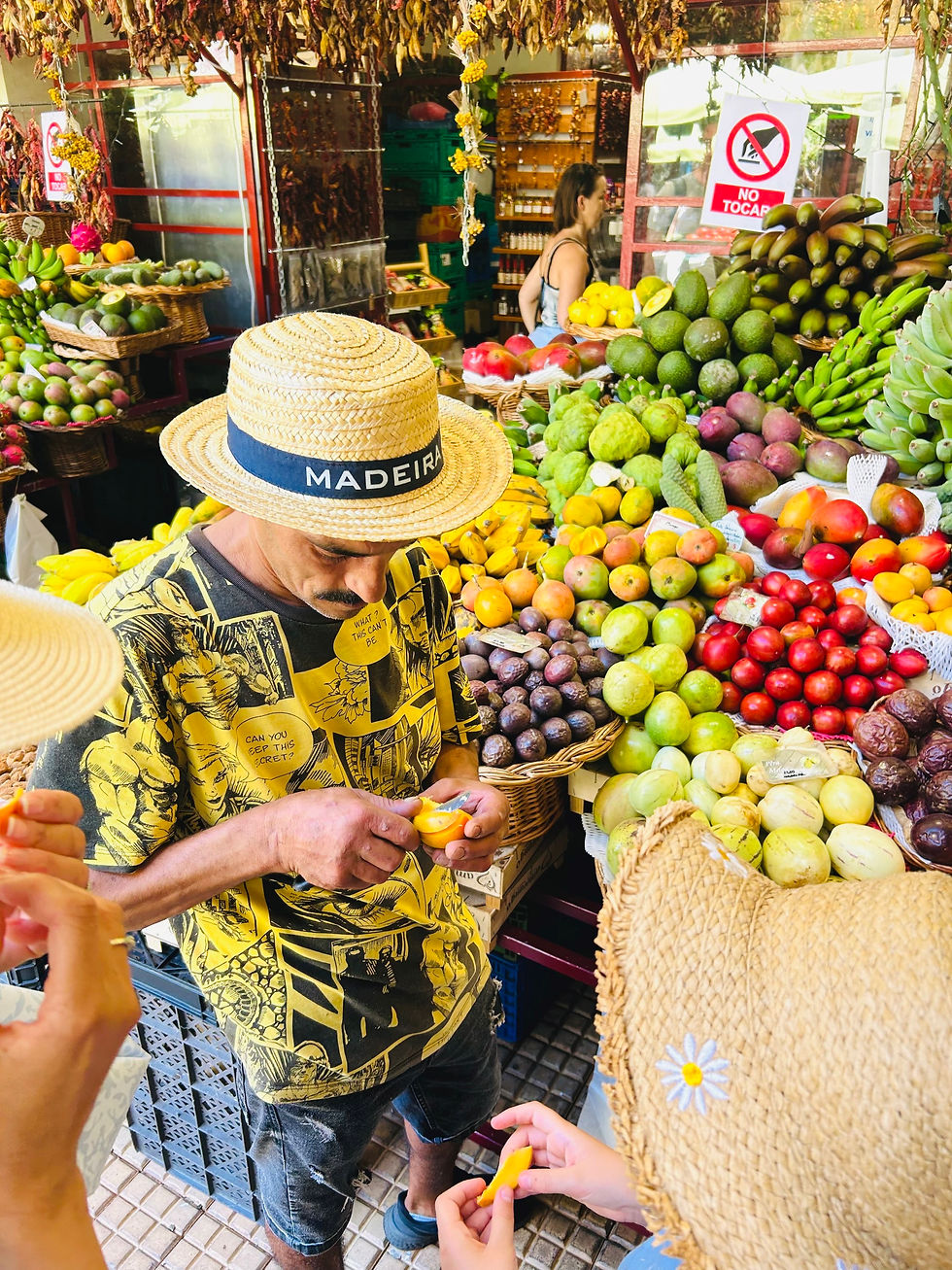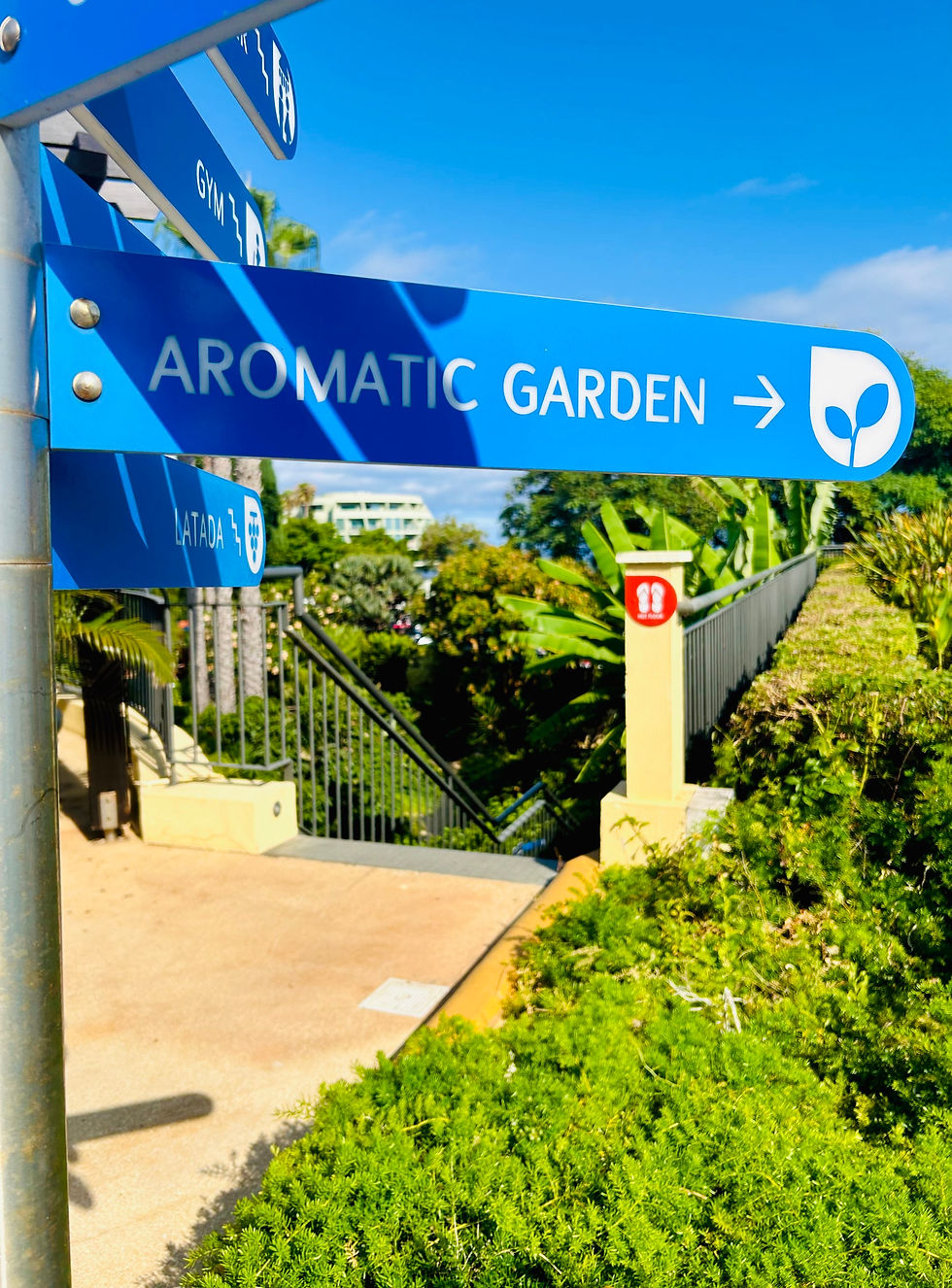By Anton Constantinou

The beautiful region of Madeira has lots to offer to curious noses. A subtropical paradise teeming with flowers, fruits and trees, Madeira is a smell sensation on a wonderful scale. As I would discover on a recent family visit to the destination.
A volcanic archipelago in the middle of the ocean, Madeira is remotely located some 250 miles north of the Canary Islands. And, until the 15th century, was untouched by humans.
For our visit to Madeira, we’d stay in Funchal – capital of Madeira’s main island – and be introduced to five main olfactive delights: Acacia Trees, Eucalyptus Trees, Fanal Forest, Mercado dos Lavradores, and a wonderful aromatic garden in our hotel.
The Acacia Trees

Like many plants in Madeira, acacias are a non-native species but can be found through the archipelago. Acacia Mearnis is the common variety here and has a powdery aroma that’s warm and iris-like. To my nose, the trees evoke the smell of baby powder, or, to be more precise Johnston’s Baby Lotion.
We’d encounter the trees on a jeep tour of the island, which would take us from our hotel in Funchal to 12 scenic points. Including the remarkable Fanal Forest: an elevation zone roughly 1,150 metres above sea level (more on this shortly).
The Eucalyptus Trees

Eucalyptus Trees are a common sight in Madeira and smell fantastic. Like acacias, the trees are a non-native species which, since the 15th century, have been planted en masse.
A source of timber, eucalyptus has for centuries been used for wood production in Madeira. And today finds a home in its evergreen forests and on its southern slope.
Our encounter with the trees would come during a tour of said forests, where we’d take pause to smell them.
Up close, the trees (or rather their leaves) have an intense menthol aroma and provide a bracing, humid atmosphere. Kristina, my girlfriend, would return home with a big bag of the leaves. Their intoxicating smell a potent reminder of our venture into the unknown.
Fanal Forest

Fanal Forest is a beautiful ancient forest on Madeira’s northwest side. The forest has an eerie, misty atmosphere and is home to a variety of trees and plants, including Laurel Trees. The flora and the atmosphere combine to give the forest a refreshing earthy scent that stays with you as you wander it.
The forest is mostly quiet, but is home to numerous sweet sounding birds. The most notable among these is the Long Toed Pigeon: a shy and silent bird, known as the Jewel of the Forest. Other birds that roam the forest include Chaffinches, Blackcaps and Blackbirds.
Mercado dos Lavradores

Mercado dos Lavradores is a bright and lively farmer’s market in Funchal’s old town, with a delectable array of fruits, vegetables, spices, fish and meat.
Many of the fruits sold here are tropical and leave a fantastic aroma in the air. Including Passion Fruit, Custard Apples, Camu Camu (a South American red/purple cherry-like fruit) and Monstera Deliciosa (a rare fruit that Cheese Plants produce, which tastes like a mix of Pineapple, Guava and Mango).
Passion Fruit is a big specialty in Madeira and comes in many forms. Estimates vary on the fruit’s number and variety, but there are said to be at least three types in Madeira, all different in taste: Passiflora Edulis (purple passion fruit), Passiflore Edulis Var Flavicarpa (yellow passion fruit), and Passiflora Mollissima (banana passion fruit).
I didn’t sample all the varieties but I certainly got a good whiff of the fruit in Madeira. And what a fantastic smelling fruit it is.
The Aromatic Garden

Our hotel, the Vila Porto Mare, was one big botanical garden, full of flowers, trees and aromatic plants. Including an orchid garden and exotic banana trees, which we discovered out front.
The green space that really drew our attention though was the hotel’s Aromatic Garden, which boasts just about every herb you can think of.
Located just behind one of the hotel’s main pools, the garden greets like a spice rack and smells incredible. Numerous varieties of herb plants can be found here including Sweet Basil, Parsley, Rosemary and a lesser-known shrub by the name of Red Hot Cat’s Tail.
While most of the plants are herbs we’ve all smelt before, the sheer concentration of them into such a small garden really captivates the nose. I was particularly taken by the Sage growing in the garden, which smelt unlike any Sage I’d ever encountered before.
If beautiful smelling destinations are your thing and you’re looking for somewhere different to go, give Madeira a visit. It might not be top of everyone’s list, but, as olfactive hubs go, it’s a must-visit place. For other articles like this, read my Istanbul and Camino de Santiago reviews.
Comments